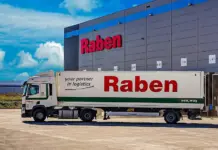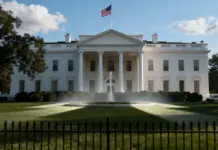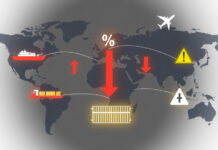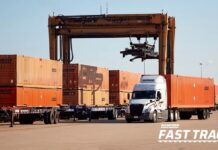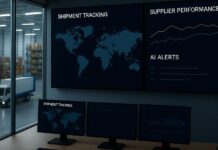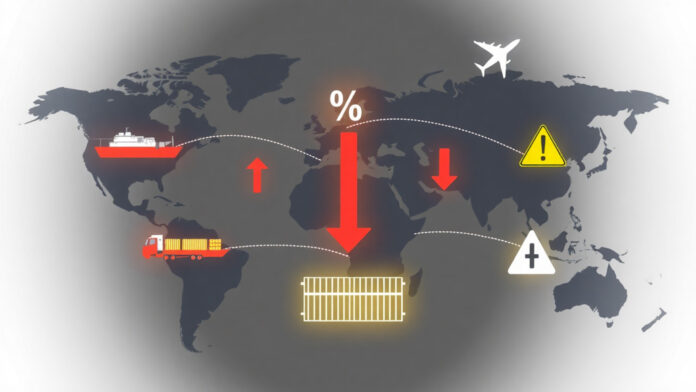In an increasingly interconnected global economy, the complexity of supply chain management extends beyond logistics and operational efficiency, diving into the intricate realm of tariff-related risks. As industries seek to secure reliable sources of raw materials, energy, or finished goods, tariff risks in supply contract go beyond legal agreements. They transform into strategic documents that can significantly impact profitability, compliance, and long-term viability.
Tariff-related risks, stemming from tariffs, trade policies, and fluctuating governmental regulations, pose a formidable challenge to negotiators. Ignoring or misunderstanding these risks can lead to inflated costs, legal disputes, or even stranded assets, undermining the strategic objectives of international trade. ItŌĆÖs important to have an in-depth understanding of how to identify, assess, and mitigate tariff-related risks during contract negotiation. It is essential for businesses aiming to navigate this complex landscape and secure sustainable commercial relationships.
The Significance of Tariff-Related Risks in Supply Contracts
Tariffs, a form of taxation imposed by governments on imported or exported goods, serve as a pivotal tool for economic policy, industrial protection, and revenue generation. However, in international trade, they introduce uncertainties that can disrupt supply chains, inflate costs, and alter competitive landscapes.
In supply contracts, be it for raw materials, intermediate goods, or finished products, tariff-related risks have uncertain tariff hikes with the introduction of new trade barriers, or removal of existing exemptions. These risks impact negotiations by influencing pricing structures, delivery schedules, and contractual obligations.
Furthermore, geopolitical tensions and trade disputes are increasing the volatility of tariffs, making risk management more critical than ever. Failure to incorporate mechanisms that address tariff risks can result in contractual breaches, financial losses, or forced renegotiations under unfavorable terms, risking project delays or bankruptcies.
Proactive navigation of these risks becomes a cornerstone of strategic negotiation, ensuring that contractual terms account for contingencies and offer flexibility to adapt to changing trade policies.
Understanding Tariff-Related Risks: Types and Sources
Tariff-related risks are multifaceted, ranging from various sources within the global economic framework. Primary among these are direct tariffs, tariffs on specific goods or categories that directly affect the cost basis of tariff risks in supply contract. The unpredictability of tariff changes, whether increase, decrease, or removal, necessitates continuous monitoring and scenario planning.
Secondary risks relate to non-tariff barriers such as restrictive licensing, import quotas, or sanitary and phytosanitary standards that impose additional costs or delays. These regulatory measures can vary widely across jurisdictions, further complicating risk assessment.
Additionally, trade policy shifts, such as the implementation of protectionist measures or retaliatory tariffs, add layers of uncertainty. These shifts are often driven by political agendas, economic crises, or strategic alliances. This makes them difficult to forecast but vital to consider during negotiations.
Best Practices in Negotiating Tariff-Related Risk Provisions
Safeguarding against tariff-related risks begins with strategic contract negotiation focused on establishing clear, flexible, and enforceable provisions. The first step involves thorough due diligence, analysing the geopolitical landscape, historical tariff trends, and specific trade policies of involved jurisdictions.
Incorporating tariff escalation clauses allows the parties to revisit pricing mechanisms if tariffs rise unexpectedly, thereby sharing the burden or passing costs proportionally. A well-drafted escalation clause should include trigger points, review periods, and formulaic adjustments tied to objective indices or governmental notices.
Anchoring contracts with proactive contingency arrangements, mechanisms such as, price caps, or price shields, can provide predictable cost ceilings. These provisions project certainty for buyers and sellers, reducing the risk of catastrophic financial exposure.
Adding flexibility through options like volume adjustments, alternative sourcing, or geographic diversification can also help mitigate risks posed by tariff fluctuations.┬Ā
Finally, establishing clear dispute resolution mechanisms, preferably arbitration with neutral jurisdictions, ensures that tariff-related disagreements are resolved efficiently, avoiding legal battles that can derail project timelines.
Tools and Strategies for Effective Risk Mitigation
In addition to drafting robust contract language, companies can employ a variety of tools and strategies to hedge against tariff-related risks. Hedging instruments such as futures contracts or tariff guarantees, similar to insurance products, offer financial protection if tariffs increase unexpectedly.
Engaging in proactive market intelligence, regularly monitoring trade policies, tariffs, and geopolitical shifts, forms the foundation of an adaptive risk management process. The integration of advanced analytics and scenario planning helps companies quantify potential impacts and craft responsive strategies.
Diversification of supply sources and routes is another vital strategy, decreasing reliance on a limited number of trading partners or geographic zones that could be vulnerable to trade barriers. Establishing long-term alliances with local suppliers in tariff-friendly jurisdictions can also secure more predictable pricing structures.
Policy engagement and advocacy with trade bodies or governments further enhance resilience. By participating in dialogue and lobbying for fair trade policies or exemptions, companies can shape a more stable and predictable trade environment.
Future Trends and Emerging Solutions
The landscape of tariff-related risks is continuously evolving. This is driven by geopolitical shifts, economic reforms, and international agreements. Moving forward, digital tools such as blockchain will revolutionise supply chain transparency, enabling real-time tracking of trade compliance and tariff changes.
Artificial intelligence and big data analytics will increasingly facilitate predictive modeling of tariff movements. This allows companies to pre-emptively adjust contractual terms or stockpile inventory ahead of anticipated changes.
Furthermore, trade agreements with built-in dispute resolution and tariff stabilisation mechanisms are expected to become more prevalent. This offers a structured framework for managing risks associated with cross-border trade.
Sustainable and eco-friendly trade practices, including the adoption of preferential tariffs for environmentally compliant products. This will also influence negotiating strategies, aligning tariff management with broader ESG goals.
Conclusion
Navigating tariff risks in supply contract requires a proactive, comprehensive approach rooted in strategic negotiation, market intelligence, and adaptive risk management tools. As the global trading environment becomes more complex and unpredictable, companies help in understanding and mitigating these risks. This helps to secure favorable contractual terms, reduce costs, and ensure supply chain resilience.
Incorporating tailored risk provisions, leveraging technological innovations, and fostering ongoing dialogue with policymakers are essential steps toward minimising exposure to tariff fluctuations. Expertise in tariff risk management not only safeguards immediate project interests but also maintains long-term operational stability in an evolving international trade landscape.┬Ā




